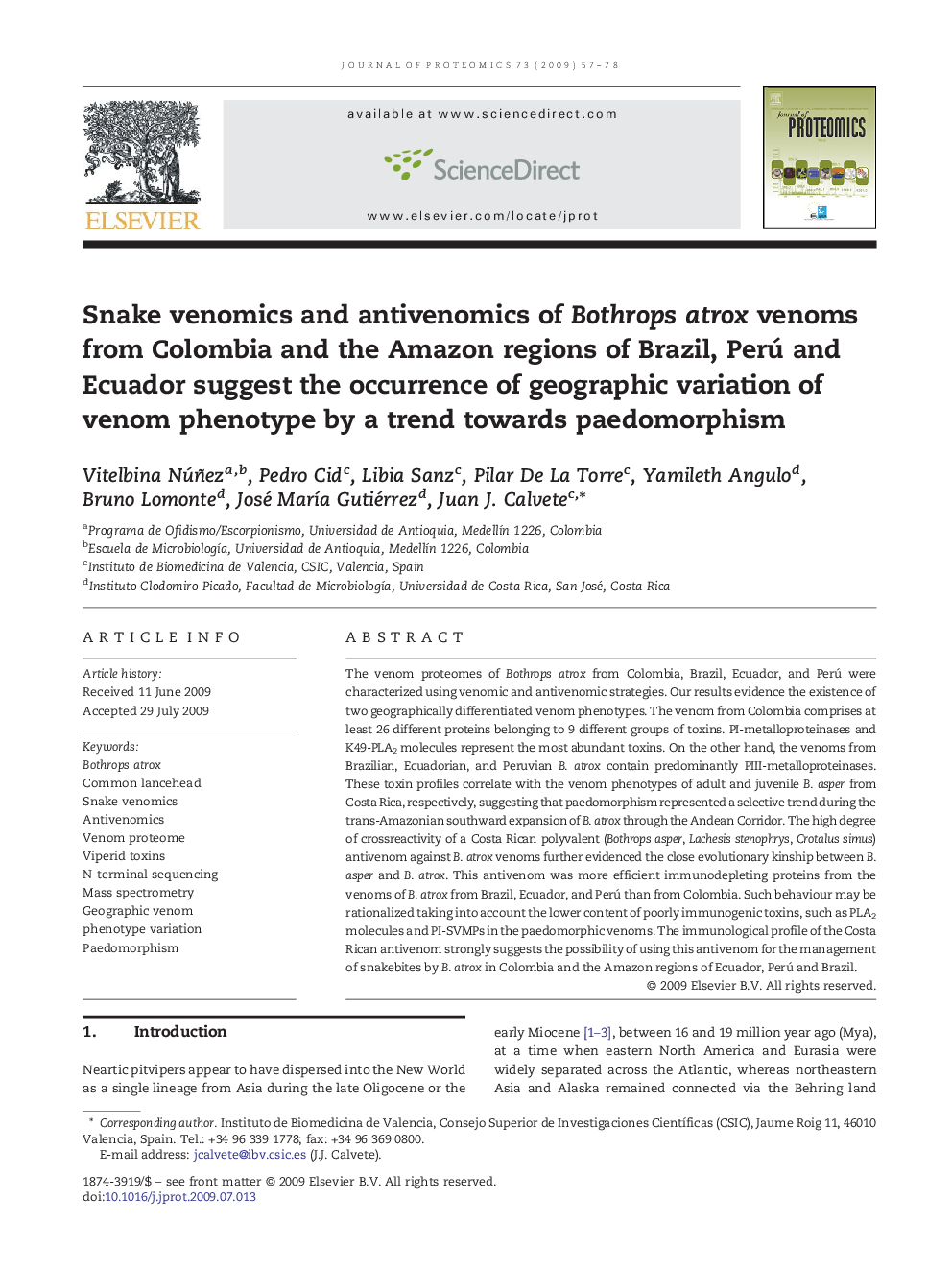| کد مقاله | کد نشریه | سال انتشار | مقاله انگلیسی | نسخه تمام متن |
|---|---|---|---|---|
| 1226784 | 968323 | 2009 | 22 صفحه PDF | دانلود رایگان |

The venom proteomes of Bothrops atrox from Colombia, Brazil, Ecuador, and Perú were characterized using venomic and antivenomic strategies. Our results evidence the existence of two geographically differentiated venom phenotypes. The venom from Colombia comprises at least 26 different proteins belonging to 9 different groups of toxins. PI-metalloproteinases and K49-PLA2 molecules represent the most abundant toxins. On the other hand, the venoms from Brazilian, Ecuadorian, and Peruvian B. atrox contain predominantly PIII-metalloproteinases. These toxin profiles correlate with the venom phenotypes of adult and juvenile B. asper from Costa Rica, respectively, suggesting that paedomorphism represented a selective trend during the trans-Amazonian southward expansion of B. atrox through the Andean Corridor. The high degree of crossreactivity of a Costa Rican polyvalent (Bothrops asper, Lachesis stenophrys, Crotalus simus) antivenom against B. atrox venoms further evidenced the close evolutionary kinship between B. asper and B. atrox. This antivenom was more efficient immunodepleting proteins from the venoms of B. atrox from Brazil, Ecuador, and Perú than from Colombia. Such behaviour may be rationalized taking into account the lower content of poorly immunogenic toxins, such as PLA2 molecules and PI-SVMPs in the paedomorphic venoms. The immunological profile of the Costa Rican antivenom strongly suggests the possibility of using this antivenom for the management of snakebites by B. atrox in Colombia and the Amazon regions of Ecuador, Perú and Brazil.
Characterization of the venom proteomes of Bothrops atrox from Colombia, Brazil, Ecuador, and Perú suggests that paedomorphism represented a selective trend during its southward expansion through the Andean Corridor.Figure optionsDownload as PowerPoint slide
Journal: Journal of Proteomics - Volume 73, Issue 1, 2 November 2009, Pages 57–78